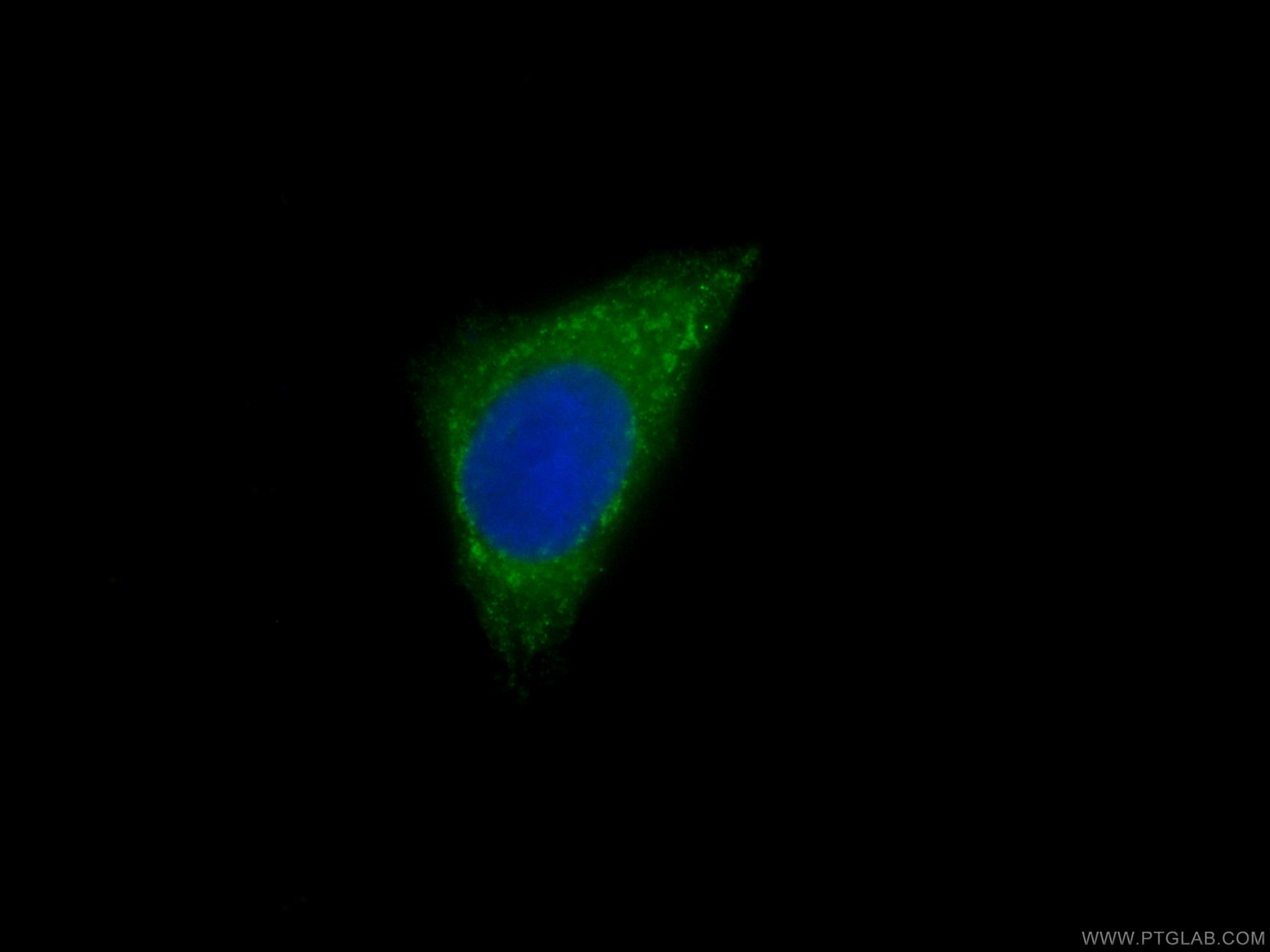Validation Data Gallery
Filter:
Tested Applications
| Positive IF/ICC detected in | MCF-7 cells |
Recommended dilution
| Application | Dilution |
|---|---|
| Immunofluorescence (IF)/ICC | IF/ICC : 1:50-1:500 |
| It is recommended that this reagent should be titrated in each testing system to obtain optimal results. | |
| Sample-dependent, Check data in validation data gallery. | |
Product Information
CL488-66066 targets CAPZA1 in IF/ICC applications and shows reactivity with human samples.
| Tested Reactivity | human |
| Host / Isotype | Mouse / IgG1 |
| Class | Monoclonal |
| Type | Antibody |
| Immunogen | CAPZA1 fusion protein Ag18841 相同性解析による交差性が予測される生物種 |
| Full Name | capping protein (actin filament) muscle Z-line, alpha 1 |
| Calculated molecular weight | 286 aa, 33 kDa |
| GenBank accession number | BC000144 |
| Gene Symbol | CAPZA1 |
| Gene ID (NCBI) | 829 |
| RRID | AB_2883248 |
| Conjugate | CoraLite® Plus 488 Fluorescent Dye |
| Excitation/Emission maxima wavelengths | 493 nm / 522 nm |
| Form | Liquid |
| Purification Method | Protein G purification |
| UNIPROT ID | P52907 |
| Storage Buffer | PBS with 50% glycerol, 0.05% Proclin300, 0.5% BSA{{ptg:BufferTemp}}7.3 |
| Storage Conditions | Store at -20°C. Avoid exposure to light. Stable for one year after shipment. Aliquoting is unnecessary for -20oC storage. |
Background Information
CAPZA1 (F-actin-capping protein subunit alpha-1) is a member of the F-actin capping protein alpha subunit family and regulates actin filament growth, stability and disassembly. Differential expression of CAPZA1 has been found in gastric cancer and melanoma, indicating its possible role in tumorigenesis. (21566537, 23545944)
Protocols
| Product Specific Protocols | |
|---|---|
| IF protocol for CL Plus 488 CAPZA1 antibody CL488-66066 | Download protocol |
| Standard Protocols | |
|---|---|
| Click here to view our Standard Protocols |
